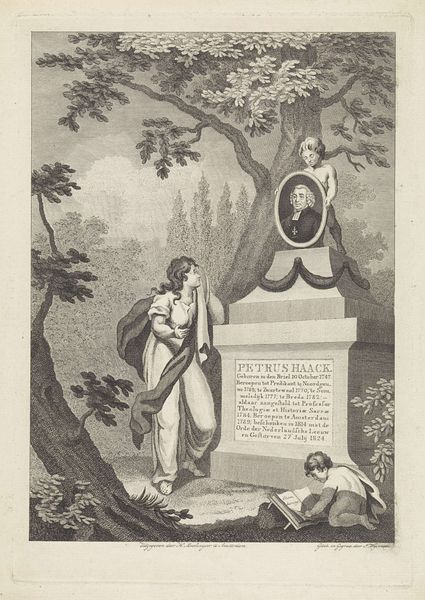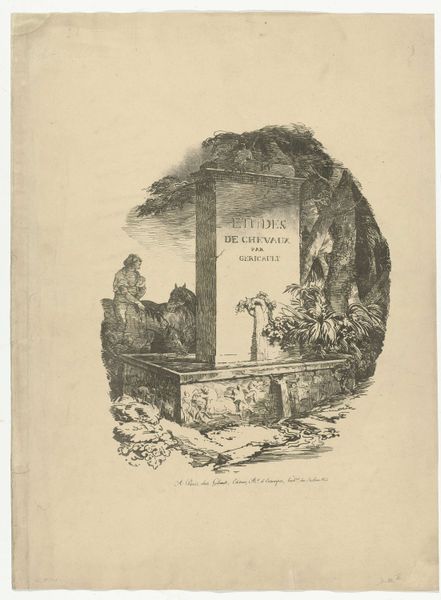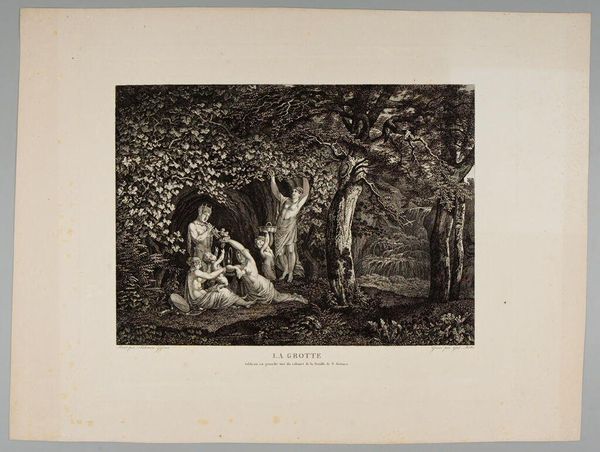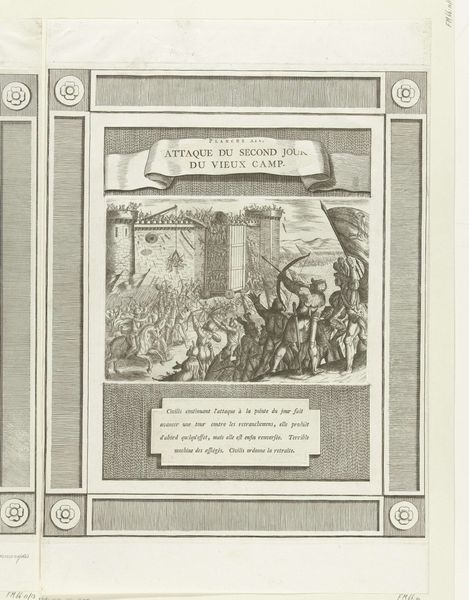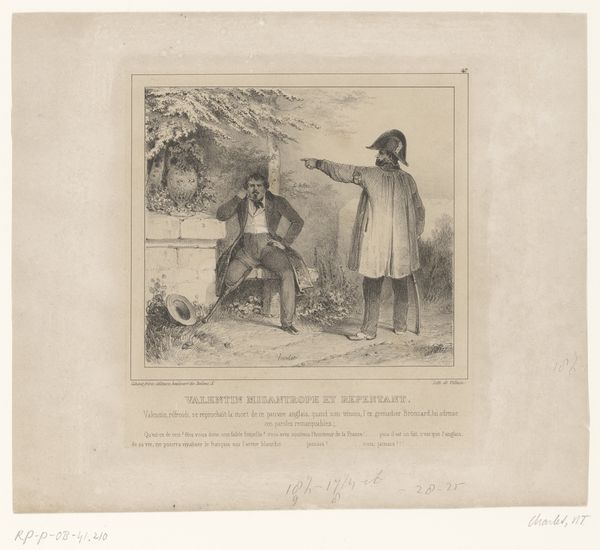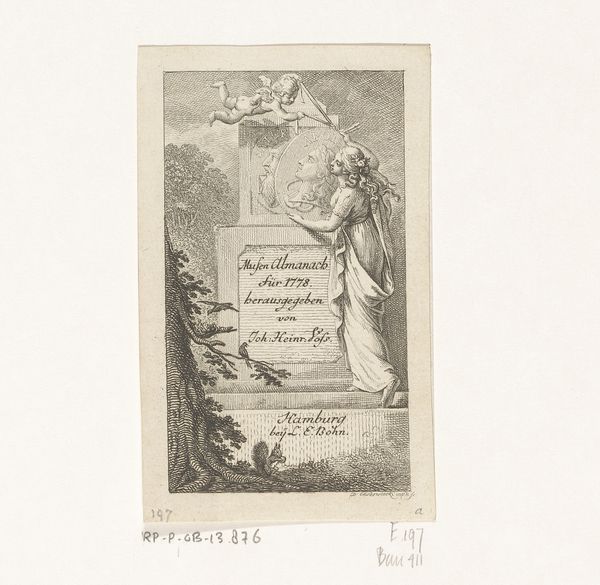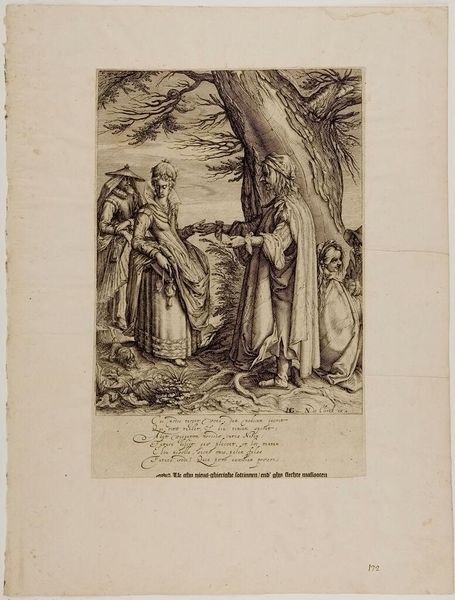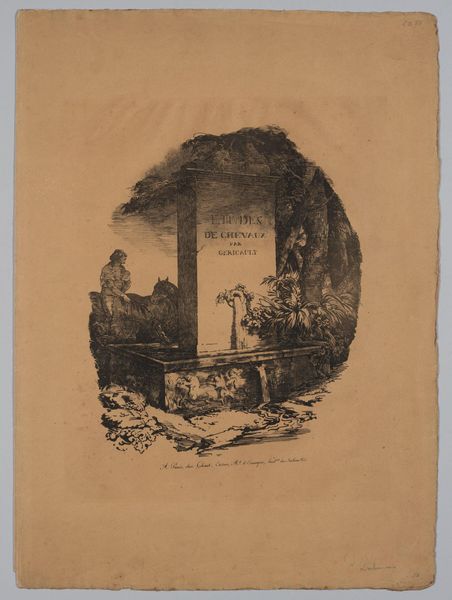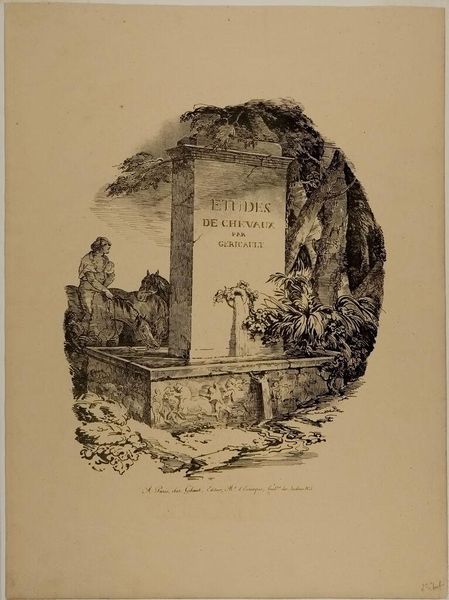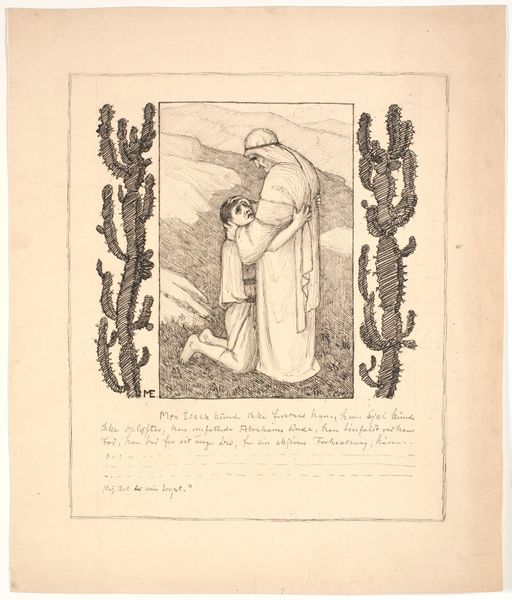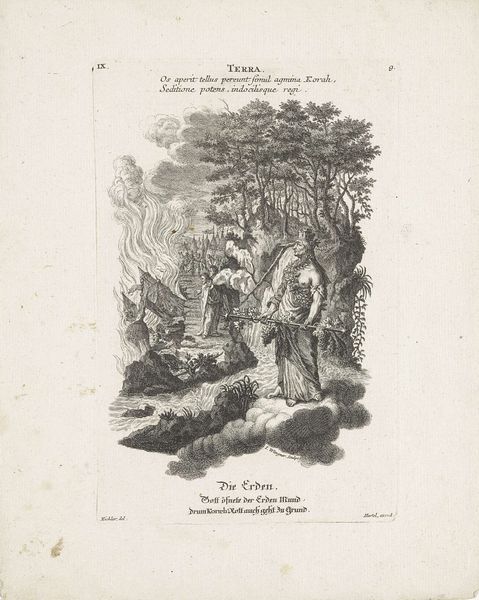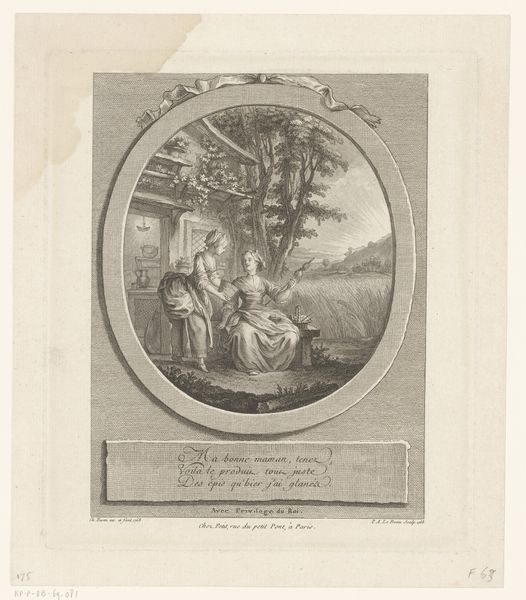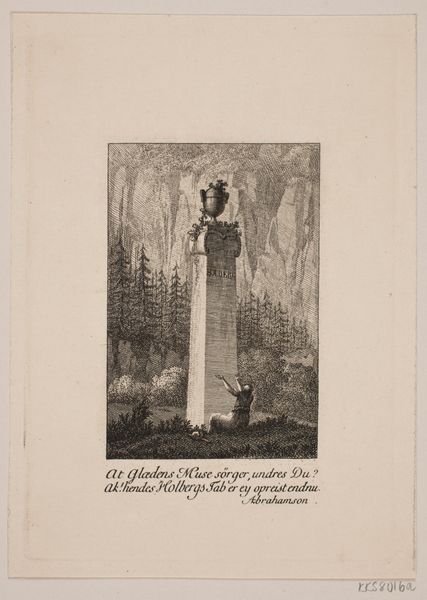
graphic-art, print, engraving
#
graphic-art
#
aged paper
# print
#
caricature
#
old engraving style
#
old-timey
#
romanticism
#
engraving
Dimensions: height 288 mm, width 363 mm
Copyright: Rijks Museum: Open Domain
Editor: This is a fascinating engraving from 1829, titled "Spotprent op de beperking van de vrijheid van drukpers," which translates to "Cartoon on the restriction of freedom of the press." The artist is anonymous. It’s quite detailed, showing what appears to be a satirical scene in a graveyard. What do you make of it? Curator: What interests me most here is the process and its relation to the subject. The graphic art medium, specifically the engraving technique, highlights the very means of communication that the print purportedly laments being limited. The artist is making a statement through labor and materiality. Editor: I see what you mean. So, the act of creating this print—the physical labor of engraving and printing—is itself a form of resistance against the press restrictions? Curator: Precisely. And we should also consider the social context: engravings like this were relatively reproducible. Think about the access this provides versus, say, painting. The artist could be critiquing not only the restriction of information, but also the methods of circulating information, democratizing it. Who would have had access to this print? What social class? Editor: That makes so much sense. Looking at the detail again, especially the scales of justice near the figure who is maybe a judge, along with the somber cemetery setting. Are those tools suggesting the production of media? What does it mean if we interpret these figures as part of the machine of circulating media? Curator: It challenges this simplistic view of “art” versus "not art." The means of production becomes central. We examine labor, materiality, and consumption through a Romantic lens, with an interest in accessible social critique. What did producing such engravings enable at that time? Editor: I hadn't considered the print itself as an active agent in the political climate, the means echoing the message. Thanks, that’s given me a lot to consider. Curator: And for me, it highlights how close art and media used to be. The historical conditions were essential in understanding art's means of communication then and how they've shifted.
Comments
No comments
Be the first to comment and join the conversation on the ultimate creative platform.
